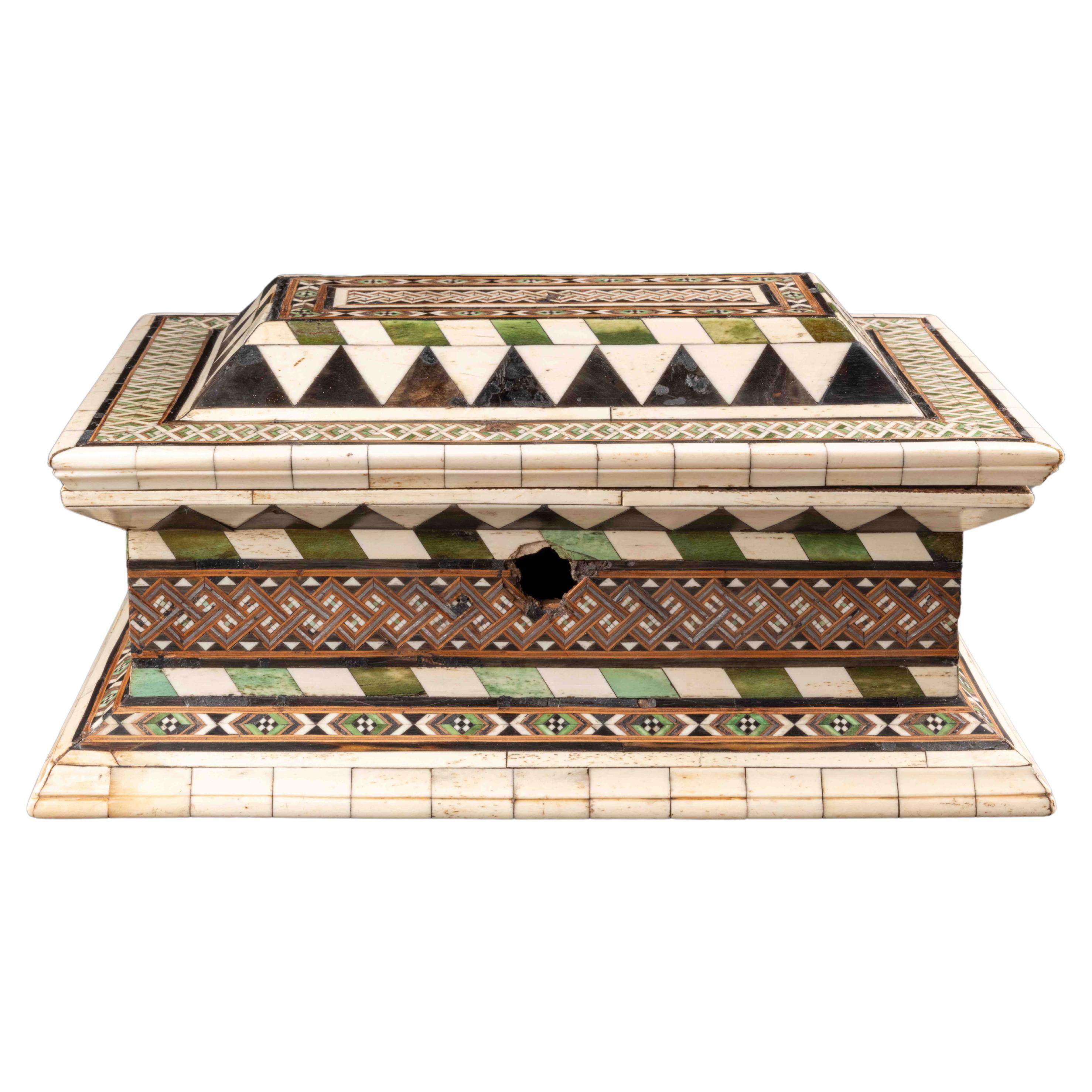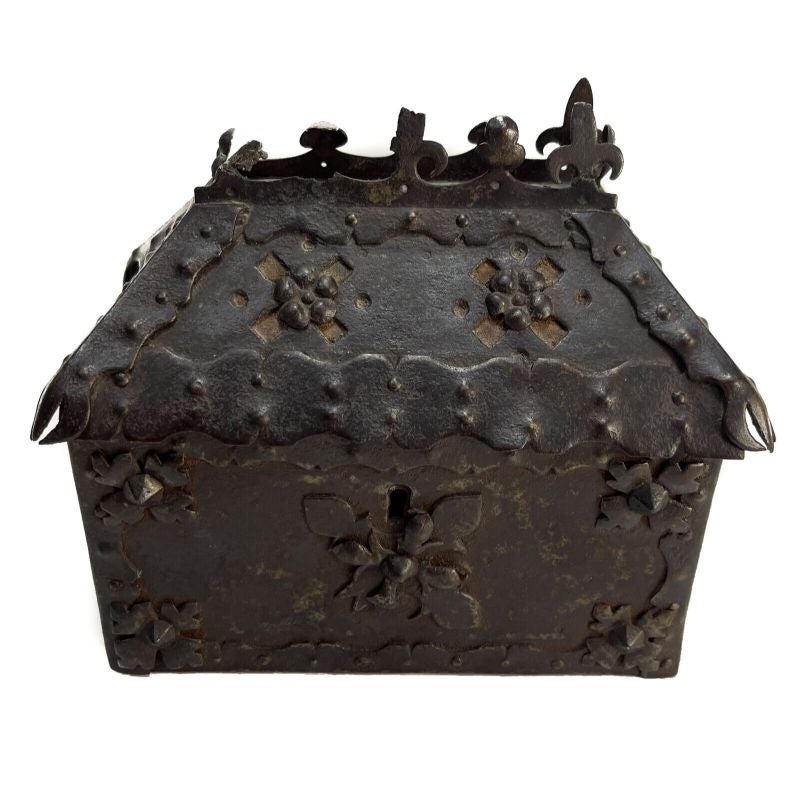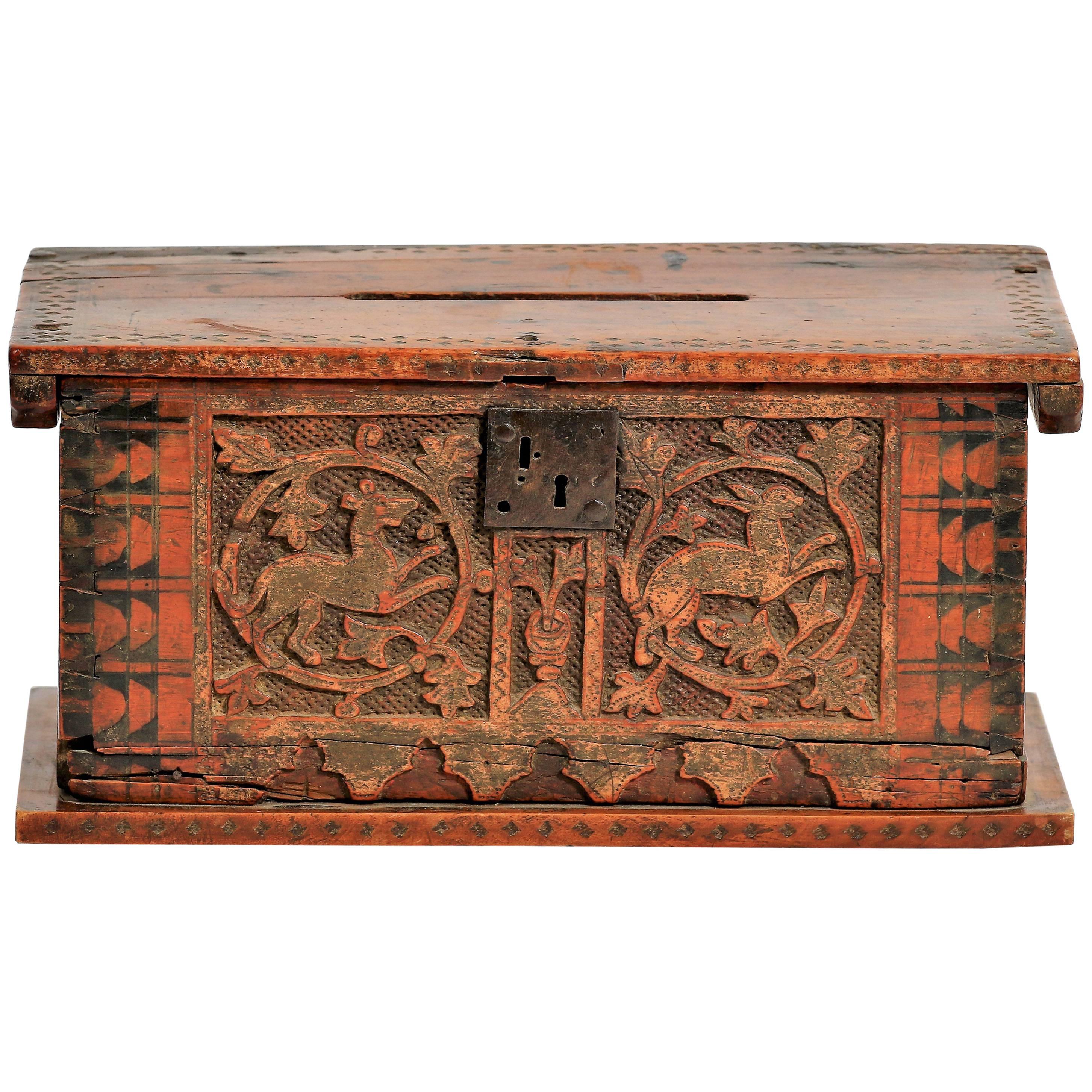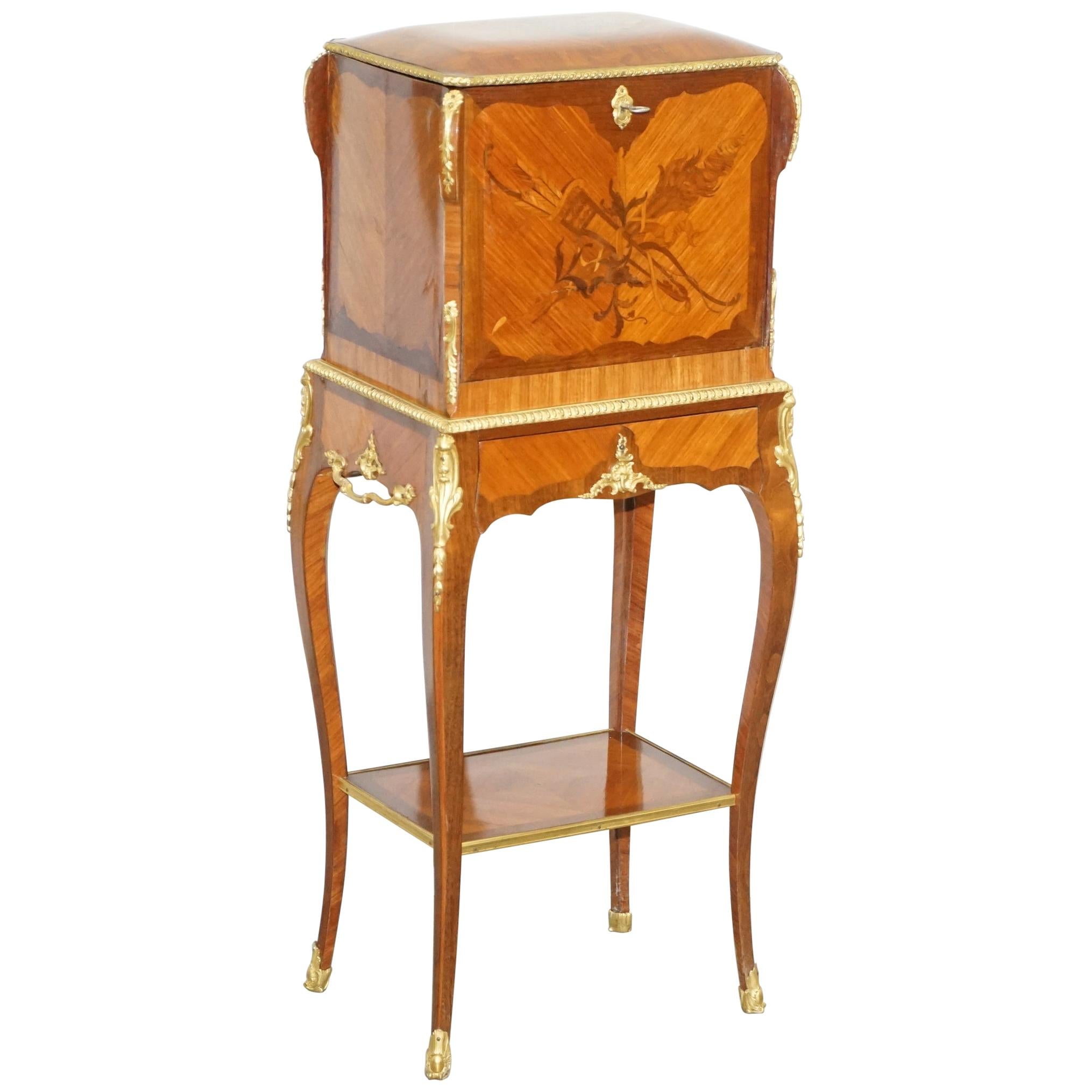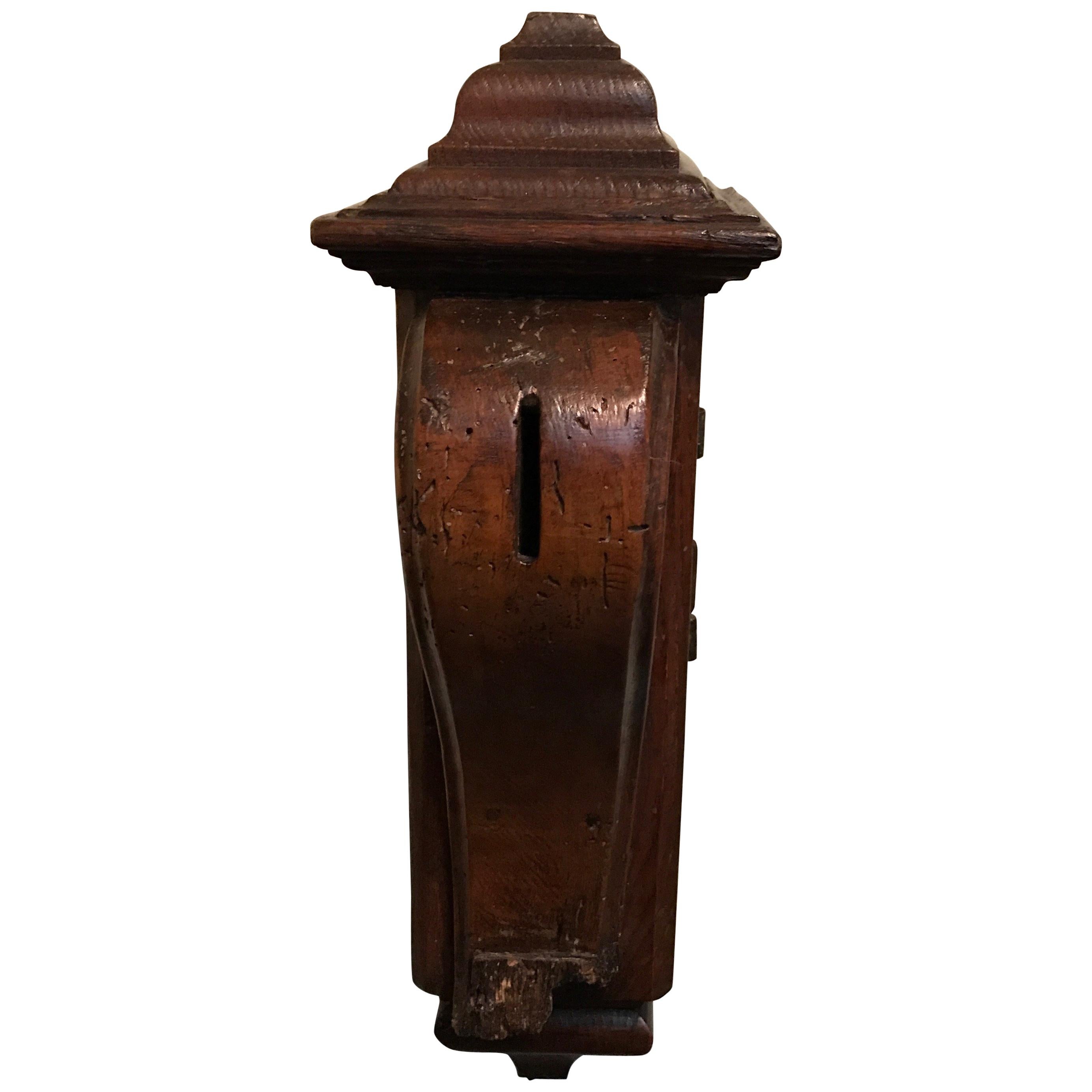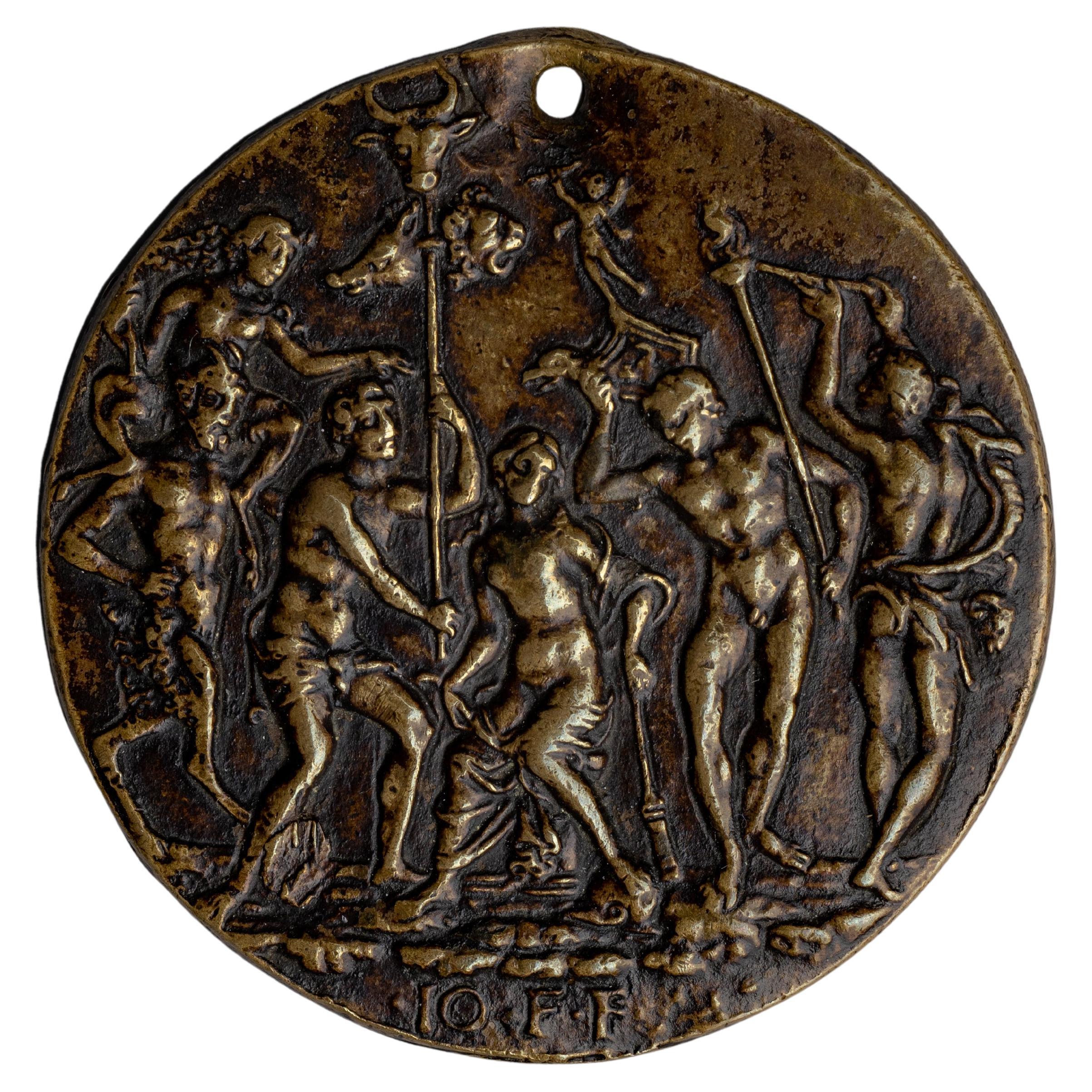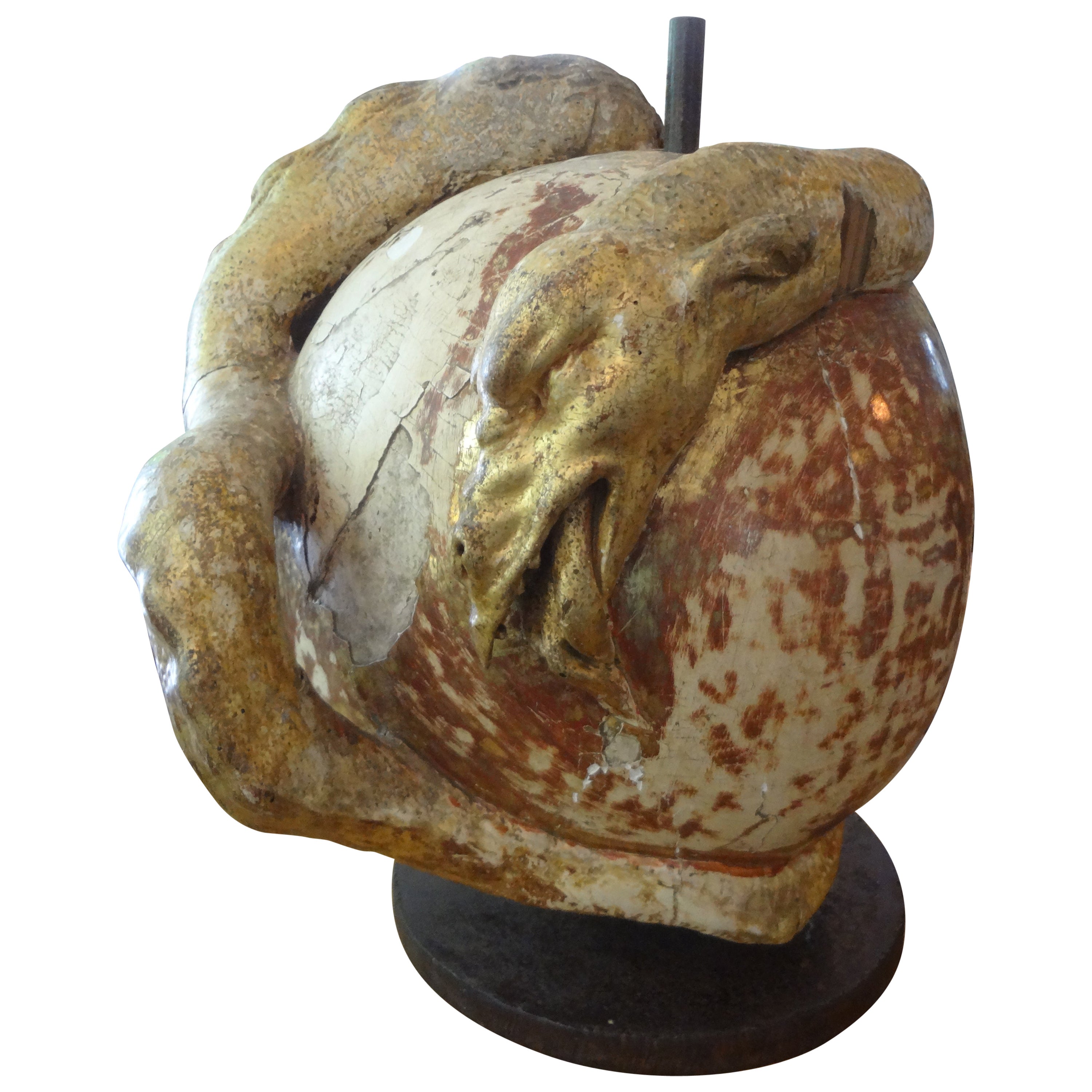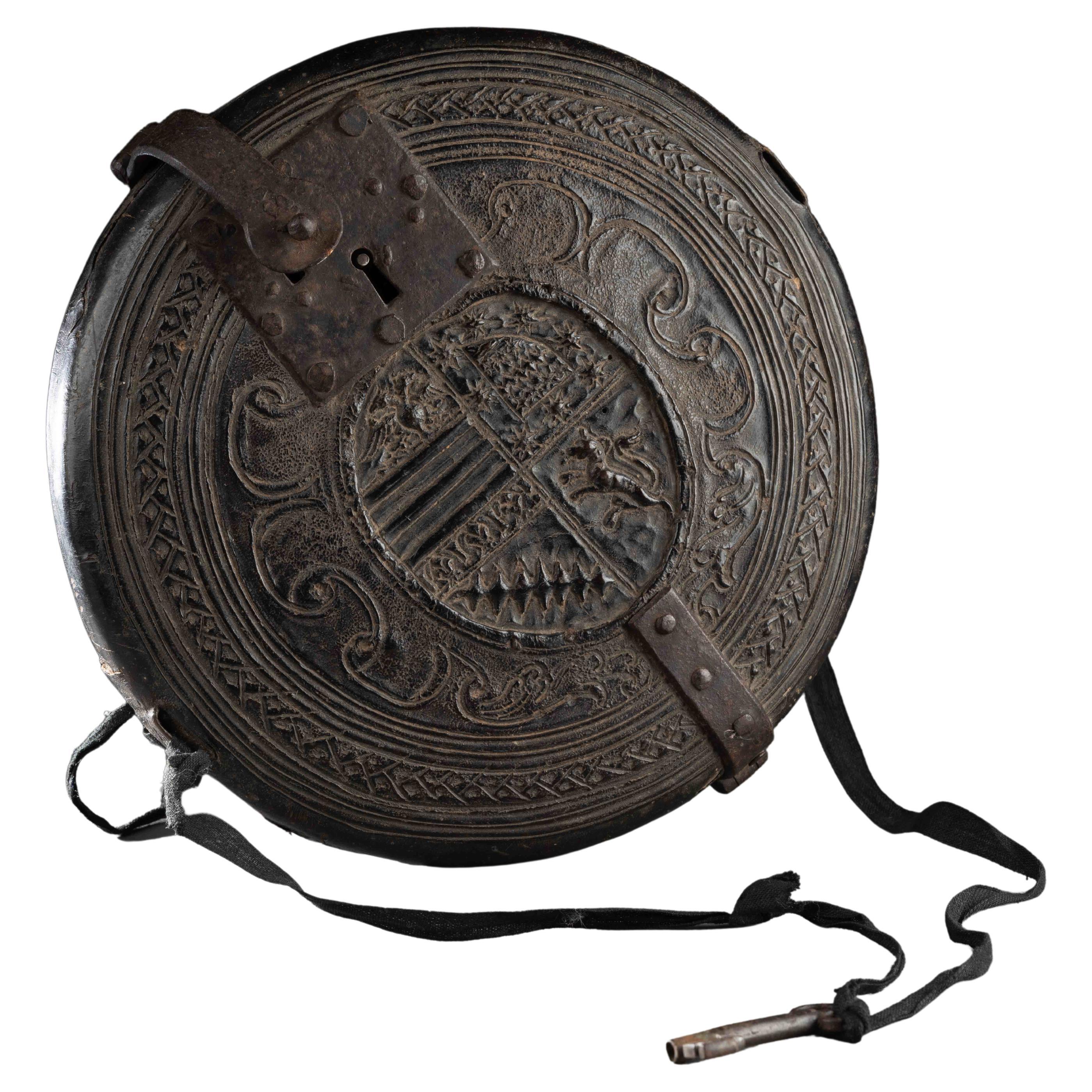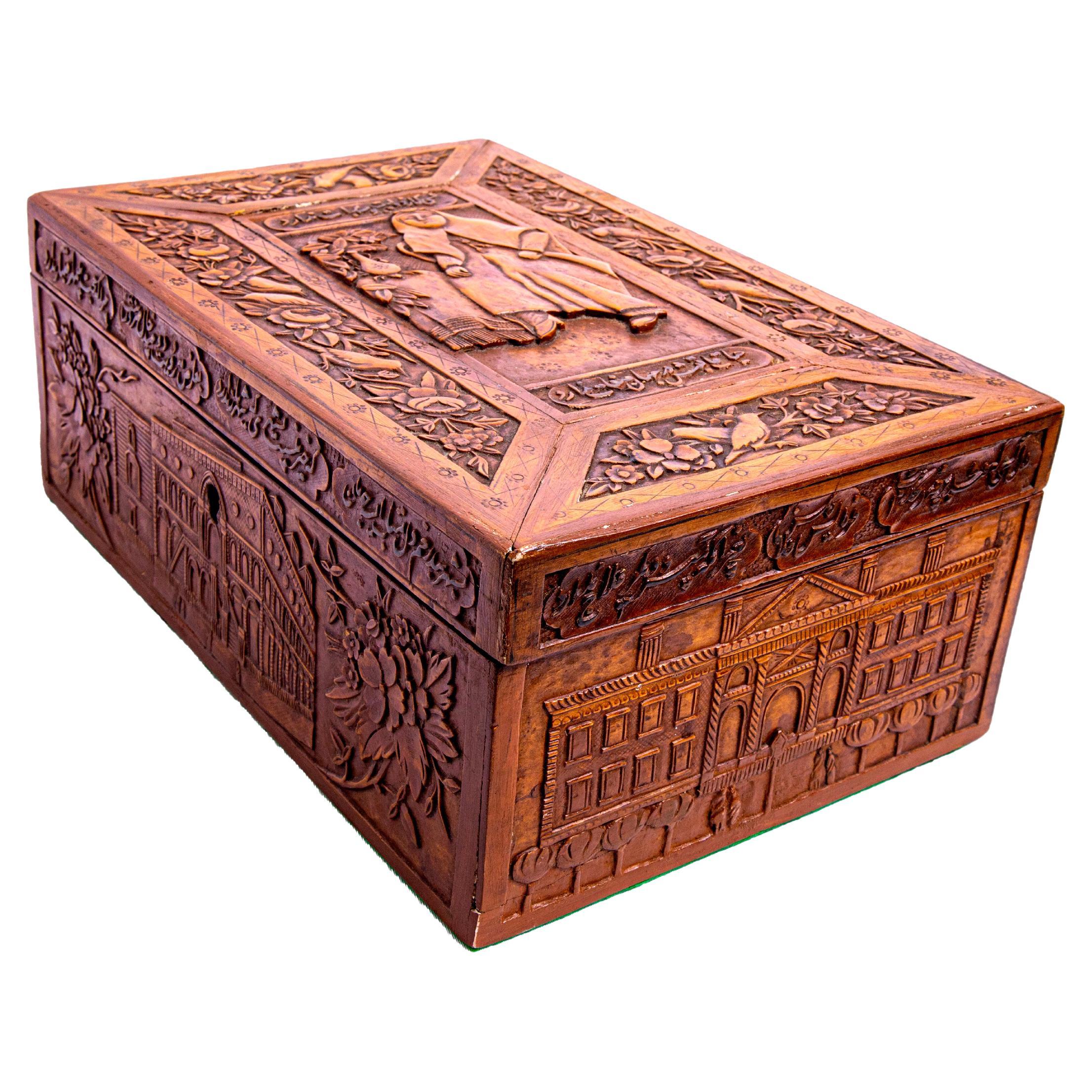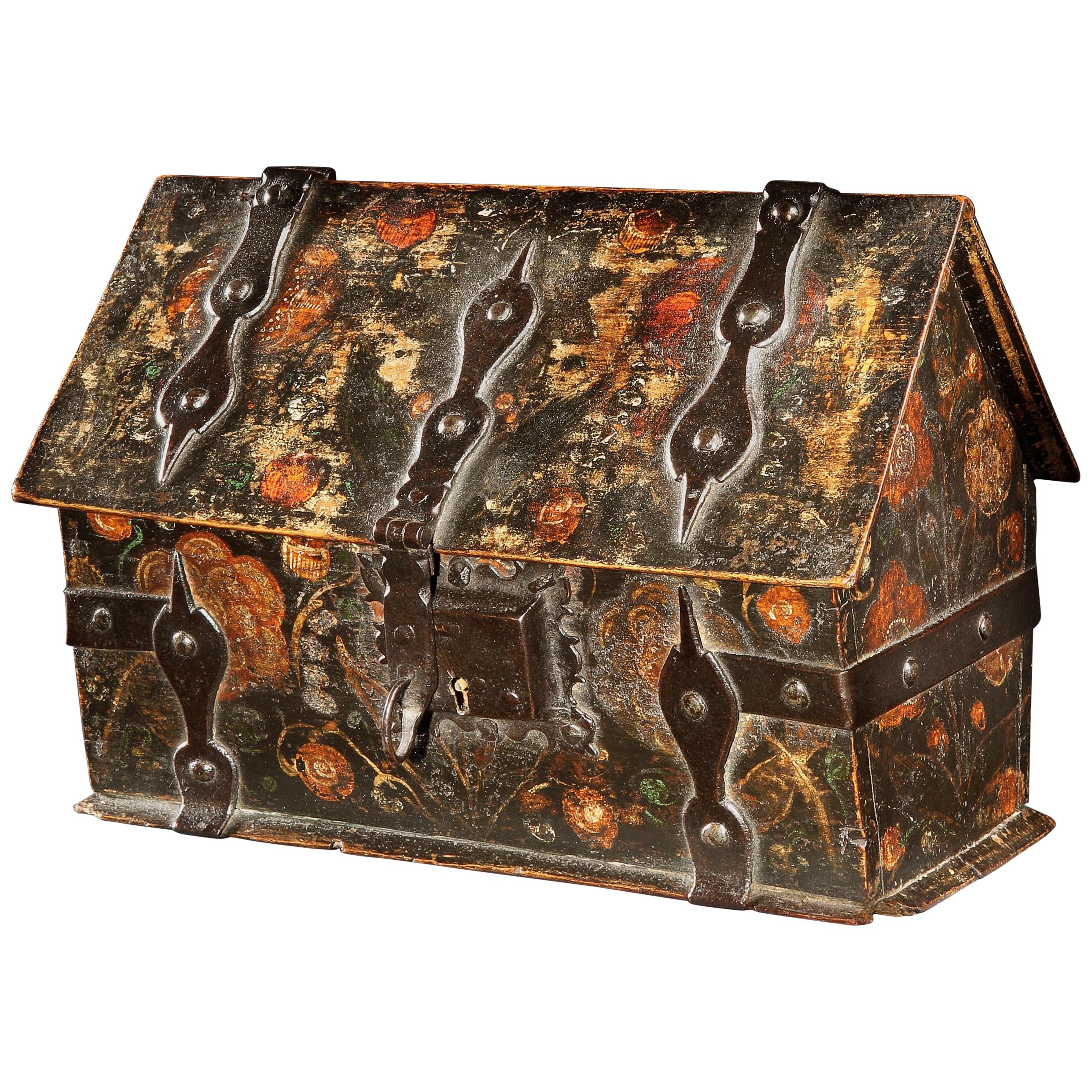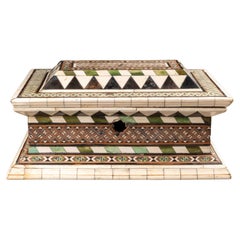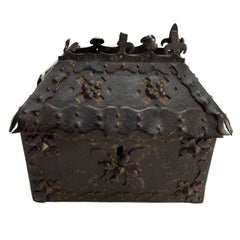
Renaissance Poplar Wood Casket with a Pastiglia Decor, Sienna, Mid-15th Century
View Similar Items
1 of 10
Renaissance Poplar Wood Casket with a Pastiglia Decor, Sienna, Mid-15th Century
About the Item
- Dimensions:Height: 9.85 in (25 cm)Width: 16.93 in (43 cm)Depth: 8.67 in (22 cm)
- Style:Renaissance (Of the Period)
- Place of Origin:
- Period:
- Date of Manufacture:Unknown
- Condition:Wear consistent with age and use. Minor structural damages. Minor fading.
- Seller Location:Paris, FR
- Reference Number:1stDibs: LU1771211244793
You May Also Like
- Embriachi workshop marquetry casket - Northern Italy, 15th centuryLocated in Bruxelles, BEEmbriachi workshop marquetry casket Northern Italy, 15th century Alla certosina inlays (bone, stained bone, pewter and wood) H 28.2 x W 18 x D 14 cm This beautiful casket of rectangular form is richly decorated with the characteristic geometric patterns of the Embriachi style. The intricate geometric patterns are fashioned by juxtaposing lighter and darker pieces of wood, (colored) bone, horn and pewter. The lid and base are framed by a broad band of horn. When ivory became scarce in Europe due to disrupted trade routes, bone was substituted. The attention to Symmetry and balance created an harmonious visual effect Enhancing the overall aesthetic appeal of the casket. The application of geometrical motifs is in Italy known as marquetry ‘alla Certosina’, named after the Certosina Church in Pavia with its famous altarpiece decorated in this way. This is ‘intarsia technique’, a term derived from the Arabic 'tarsi', which means ‘incrustation' recalling ancient mosaics made from various materials. These geometric elements not only enhance the aesthetic appeal of the caskets but also demonstrate the versatility and skill of the artisans in creating multifaceted works of art. ‘Alla Certosina’ became famous through the Northern Italian Embriachi family who achieved a particularly high standard in working in this technique. Venice in particular was known for the production of these luxurious boxes. The caskets, hexagonal or rectangular, surmounted by a lid decorated in several registers constitute the secular, albeit equally renowned component of the workshop’s production, in addition to mirror frames and various everyday objects. The method of fabrication of those objects was based on two concepts that underlay pre-industrial production: standardization and modularity, thanks to a distribution of skills according to the different phases of fabrication. even the realization of the marquetry motifs (in the form of ingots from which portions of the desired size were cut) were therefore entrusted to various specialized craftsmen, as were the assembly phase. Today better known thanks to the extensive research work recently carried out by Michele Tomasi, this workshop owes its name to its founder and owner, the Florentine Baldassare Ubriachi (or degli Embriachi), a merchant and banker established in the Tuscan capital before he settled in Venice in 1395. Together with sculptor Giovanni di Jacopo, who directed the workshop, from the last years of the fourteenth century, Baldassare oversaw a production that was truly original, and still easily recognizable today, comprising monumental altarpieces and various objects, primarily triptychs and caskets. The precise location of the workshop is unknown, except that it originated in Florence and in ca. 1431 there was apparently a workshop in Venice, in the area of S Luca. They employed local workers specializing in 'certosina' (inlay of stained woods, bone and horn), and the workshop produced items carved in bone (usually horse or ox) with wood and bone marquetry. The geometric decoration of Embriachi caskets reflects the artistic complexity and attention to detail that characterized their work. this inlaid casket is a testament to the skill and artistry of the Embriachi family and serves as a stunning example of the decorative arts of the late Middle Ages. Related Literature : E. Berger, Prunk-Kassetten: Europäischen Meisterwerke aus acht Jahrhunderten / Ornamental Caskets...Category
Antique 15th Century and Earlier Italian Renaissance Decorative Boxes
MaterialsPewter
- Medieval Patinated Iron-Mounted Oak Casket, 15th CenturyLocated in Gardena, CAMedieval patinated iron-mounted oak casket, 15th century A Continental Medieval patinated iron mounted oak wood box. 15th Century or earlier. Addition...Category
Antique 15th Century and Earlier Medieval Decorative Boxes
MaterialsIron
- Very Rare Casket Minnekästchen or Box, Germany or Italy, 15th CenturyLocated in Beuzevillette, FRWooden coffret, call minnekästchen, engraved with a dog, a hare and foliage with polychromy remains. During the Middle Age, the hare is a symbol of fertility, joy and represents the Christ...Category
Antique 15th Century and Earlier European Gothic Decorative Boxes
MaterialsIron
- Alfred Beurdeley Tulip & King Wood Bronze Jewelry Casket on Stand Paris FranceBy Emmanuel-Alfred BeurdeleyLocated in GBWe are delighted to offer for sale this exceptionally rare Alfred Beurdeley (1847-1919) Paris fully stamped Tulip and Kingwood with bronze mounts jewelry casket on stand This is one of the finest jewelry caskets I have ever seen, the quality is second to none, if you search works by Berurdeley you will see multiple pieces in the hundreds of thousands of pounds, these are some of the best and most collectable original handmade master craftsman pieces ever conceived. A Japanese lacquered cabinet of similar form made by Beurdeley which was larger sold in Sothebys in June last year for 216,125 Euros including fees The cabinet is made with bookmatched Tulip and Kingwood with gilt bronze mounts all-over, the leather top is the original which is nicely aged, there is also a functioning key which is needed to access the drop front Condition wise this piece has been cleaned waxed and polished, I have left the overall finish original however it can be fully restored to include a strip back and French polish should the new owners wish, this restoration would be completed at the new owners expense. On inspection I can see two panels which have timber shrinkage splits, there are some patina marks to the top and general patina marks Dimensions: Height 100.5cm Width 41.5cm Depth 31cm Please note all measurements are taken at the widest point Alfred Beurdeley, 1847-1919 Nationality: French Date of Birth: 1847 Place of Birth: Paris Place of Death: Paris Identity: Emmanuel-Alfred Beurdeley was a collector who came from a family of cabinetmakers, antique dealers and collectors. He was the illegitimate son of Louis-Auguste-Alfred Beurdeley (1808–82). His grandfather, Jean Beurdeley (1772–1853), who served in Napoleon's army, opened a small antique shop in the Marais district of Paris. In 1830 he bought the Pavillon de Hanovre, 28 Boulevard des Italiens, which became the Beurdeley firm's principal gallery until 1894. L.-A.-A. Beurdeley dealt in antiques and works of art and was also a cabinetmaker specializing in reproductions of seventeenth and eighteenth Century Furniture. His clients included Napoleon III and the Empress Eugénie. Life: In 1875 E.-A. Beurdeley took over his family's gallery and workshops and until 1894 concentrated on continuing the line of luxury furniture sold by his father. He was one of the most important Parisian cabinetmakers, and won a Gold Medal at the Exposition Universelle in Paris in 1878. He was appointed Chevalier de la Légion d'honneur in 1893 following the Universal Exhibition in Amsterdam. In 1895 he closed the Pavillon de Hanovre and retired to his hôtel in the Rue de Clichy. The rest of his life was spent acquiring and selling enormous collections of furniture, Chinese porcelain, paintings and drawings, including an extraordinary group of eighteenth century French drawings by François Boucher, Jean-Honoré Fragonard, Nicolas Lancret and Antoine Watteau in 1905. He also owned JW's La Dormeuse...Category
Antique 19th Century French Victorian Cabinets
MaterialsBronze
- Spanish Renaissance Casket of the 16th CenturyBy Europa AntiquesLocated in Madrid, ESSpanish Renaissance casket, 16th century In carved, polychrome and gilded wood decorated with a vase with horns of plenty, heads of cherubs and fruits. In the lock a shield with two ...Category
Antique 16th Century Dutch Baroque Decorative Boxes
MaterialsWood
$3,913 Sale Price20% Off - 15th Century Offertory Box Very Very RareLocated in Diest, Vlaams BrabantFrom the Elisabeth Gasthouse clinic in Diest Flanders between 1250 and 1450 After that year owners changed More info on the internet Or mail me Very rare peace with big history a...Category
Antique 15th Century and Earlier Belgian Baroque Decorative Boxes
MaterialsWood
Recently Viewed
View AllMore Ways To Browse
15th Decor
Renaissance Casket
Antique White Cabinets Lowes
Casket 15th
15Th Century Casket
Used Cabinets
Kitchen Storage
Cabinet In Wood
Vintage TV Cabinets
Vintage Wood Pieces
Used Kitchen Storage
Antique Oak
Shelf Used
Antique Oak Antique Furniture
Antique Oak Furniture
Antique Furniture Oak
Antique Furniture Oak Furniture
Antique Oak Furniture Antiques
